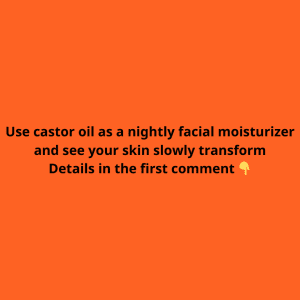Nocturnal leg cramps (NLC) are a common yet painful condition that can disrupt your sleep and leave you in discomfort for days. If you’ve ever been jolted awake by a sudden cramp in your leg, you know how unpleasant it can be. These cramps typically strike at night and are most common among people over 50, though younger individuals aren’t immune. But what exactly causes these nighttime nuisances, and how can you prevent them? Let’s explore everything you need to know about nocturnal leg cramps, including the best natural remedies to keep them at bay.
What Triggers Nocturnal Leg Cramps?

Nocturnal leg cramps often stem from a lack of physical activity during the day. When your muscles aren’t used regularly, they can become tight, leading to cramps. Reduced blood flow to the legs is another primary cause. These cramps usually last just a few seconds, but the pain can linger for days, disrupting your sleep and affecting your daily life.
Other common triggers include sitting in the same position for too long, standing on hard surfaces like concrete for extended periods, or overexerting your muscles during exercise. Some medical conditions, such as Parkinson’s disease, diabetes, and flatfoot, can also increase your risk of experiencing nocturnal leg cramps. Even certain medications, like diuretics, can contribute to the problem.
Nocturnal Leg Cramps vs. Restless Legs Syndrome: What’s the Difference?
It’s easy to confuse nocturnal leg cramps with Restless Legs Syndrome (RLS), but they are distinct conditions with different symptoms and causes. While NLC causes sharp pain and prevents movement, RLS is characterized by a tingling sensation or discomfort in the legs that prompts you to move them. RLS doesn’t cause the same intense pain or cramping that NLC does. Understanding these differences is crucial for seeking the right treatment and relief.
Natural Remedies to Prevent and Treat Nocturnal Leg Cramps

If you frequently experience nocturnal leg cramps, incorporating natural remedies into your routine can help prevent them and provide relief when they strike. Here are some effective methods:
- Stretching: Regular stretching can improve muscle flexibility and reduce the likelihood of cramps. Focus on stretching your calf and thigh muscles, particularly before bed.
- Hydration: Dehydration is a significant factor in muscle cramps, so make sure you’re drinking plenty of water throughout the day. Avoid excessive consumption of alcohol and caffeine, as they can contribute to dehydration.
- Magnesium and Potassium Supplements: These minerals play a vital role in muscle function. If you’re not getting enough from your diet, consider taking supplements to help prevent cramps.
- Horse Chestnut: This herbal remedy is known for improving blood flow in the legs, which can help reduce the frequency of nocturnal leg cramps.
- Heating Pad: Applying a heating pad to the affected area can help relax the muscle and ease the pain. Use it for 10-15 minutes before bed as a preventative measure or after a cramp to relieve discomfort.
- Acupuncture: Some people find relief from nocturnal leg cramps through acupuncture, which can help improve circulation and relax muscles.
- Avoid High Heels: Wearing high heels can strain your calf muscles, increasing the likelihood of cramps. Opt for comfortable, supportive footwear instead.
Immediate Actions When a Cramp Strikes

When a nocturnal leg cramp hits, quick action can help alleviate the pain and prevent the cramp from returning. Here’s what you should do:
- Get Up and Walk: Moving around helps increase blood flow to the cramped muscle, which can help it relax. Walk around for a few minutes until the cramp subsides.
- Massage the Area: Gently massaging the affected muscle can help relieve tension and reduce pain. Use firm but gentle pressure and continue until the cramp eases.
- Yellow Mustard: It might sound unusual, but taking a teaspoon of yellow mustard has been reported to relieve muscle cramps quickly. The exact reason isn’t fully understood, but some believe it’s due to the acetic acid in mustard, which helps the body produce more acetylcholine, a neurotransmitter that stimulates muscle function.
Preventing Nocturnal Leg Cramps: A Long-Term Strategy

Preventing nocturnal leg cramps requires a proactive approach. Incorporate regular physical activity into your daily routine to keep your muscles active and flexible. Pay attention to your posture, especially if you sit for long periods, and make sure to take breaks to move around. Staying hydrated and ensuring you get enough essential minerals like magnesium and potassium are also crucial for preventing cramps.
For those who frequently suffer from nocturnal leg cramps, making these lifestyle changes can significantly reduce their occurrence. If you continue to experience cramps despite your best efforts, consult a healthcare provider to rule out any underlying medical conditions that might be contributing to the problem.
Conclusion: Take Control of Your Nighttime Comfort

Nocturnal leg cramps are more than just a nighttime nuisance—they can severely impact your quality of life. By understanding what causes them and taking steps to prevent and treat them, you can reduce their frequency and severity. Whether it’s through regular stretching, staying hydrated, or using natural remedies like horse chestnut, there are plenty of ways to keep these cramps at bay. Don’t let nocturnal leg cramps steal your sleep—take control of your nighttime comfort today.


